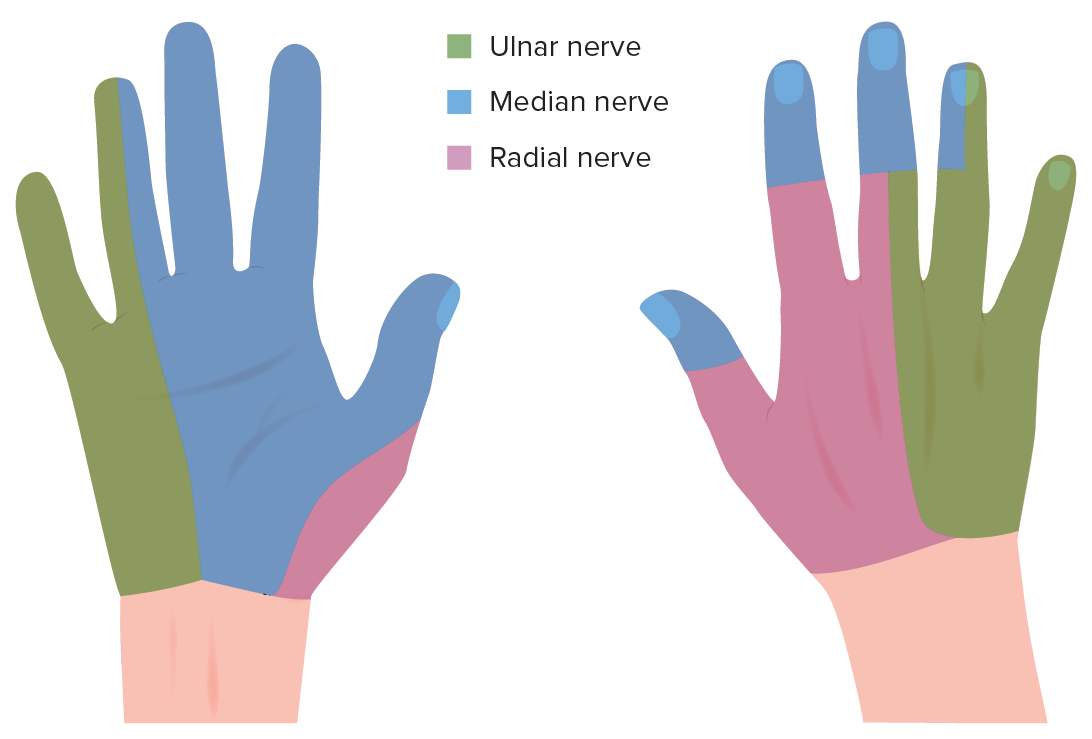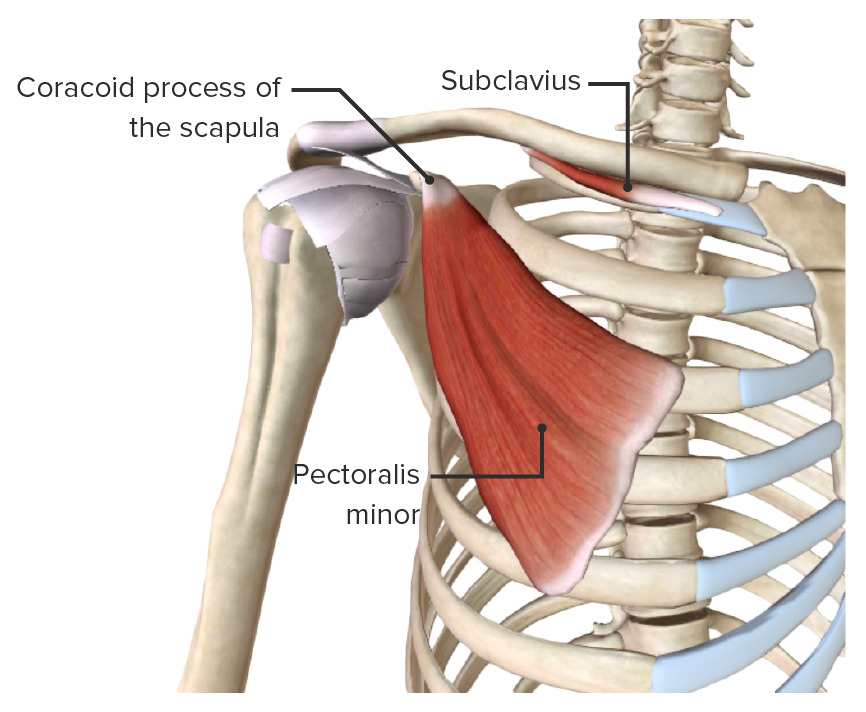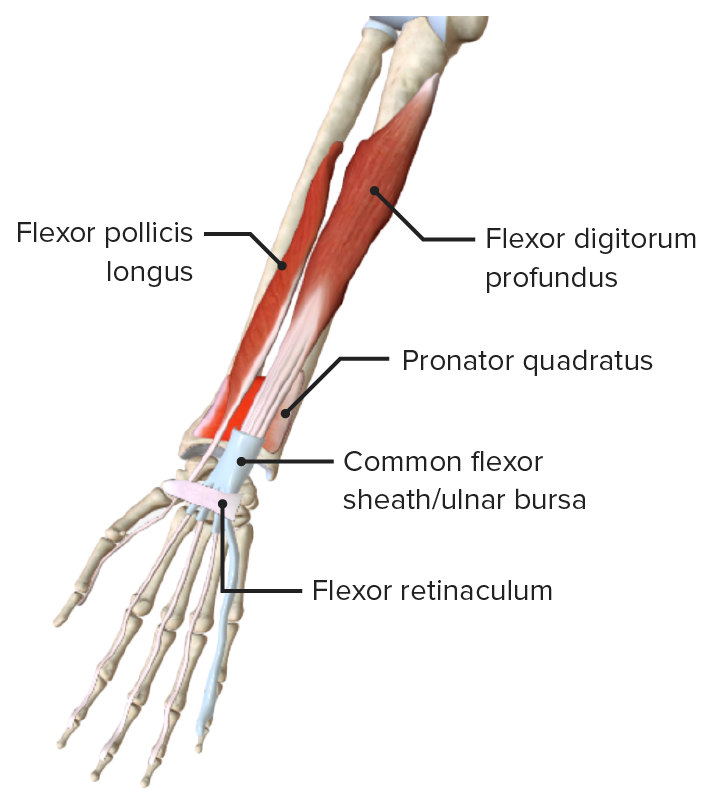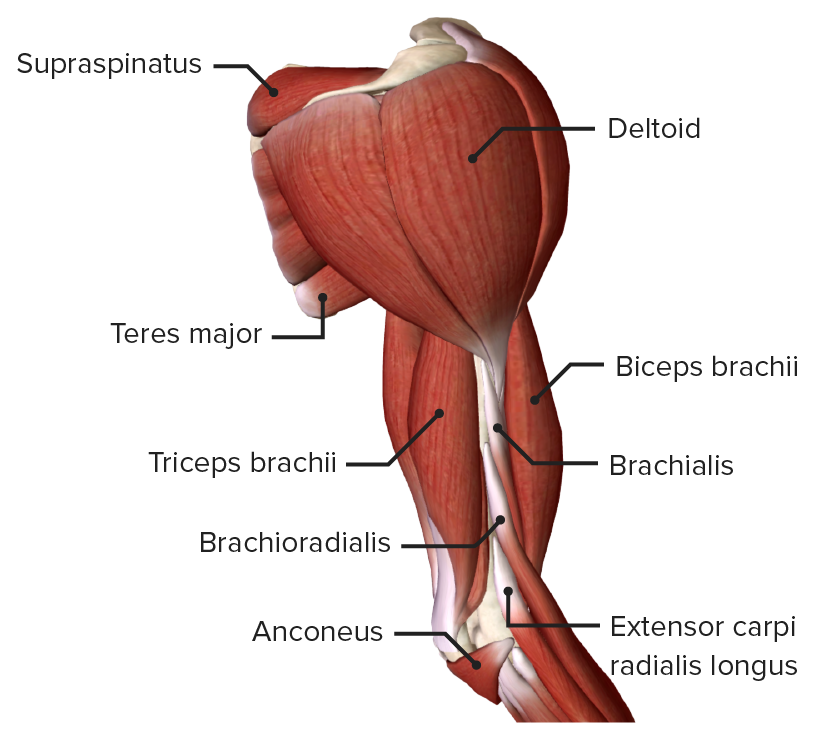Playlist
Show Playlist
Hide Playlist
Osteology of the Upper Limb – Bones and Surface Anatomy of Upper Limb
-
Slides 01 UpperLimbAnatomy Pickering.pdf
-
Download Lecture Overview
00:00 and we can see that in the next few slides. 00:04 We can see here, we have the axial skeleton. So this axial skeleton down here can constitute your vertebral column. We can see radiating from your vertebral column we have the ribs and these all form parts of your axial skeleton. Attaching to the axial skeleton for the upper limb is the clavicle and the clavicle forms part of the appendicular skeleton. The appendicular skeleton, the upper limb in this case, the superior appendicular skeleton is connected to the axial skeleton by way of just one joint. This joint that exists between the medial end of the clavicle and the sternum, the sternoclavicular joint. This is the only joint that allows the superior appendicular skeleton to articulate with the axial skeleton and this small joint enables a high range of movement. So the superior appendicular skeleton, the upper limb therefore has this wide range of movements. So If we look at this appendicular skeleton in more detail, this is the superior appendicular skeleton, the upper limb. The lower limb would be your inferior appendicular skeleton. And we can see here i have mentioned this before, it includes a whole series of bones. We have got the clavicle which we can see here. The clavicle, this medial end of the clavicle attaching to the sternum and then we have the scapula which we can see here, this flat triangular-shaped bone that lies alongside the posterior aspect of the ribs. We can then see we have got this long bone here which is the humerus. The humerus is articulating with the glenoid cavity of the scapula forming the glenohumeral or shoulder joint. And then we have this long humerus that articulates with both the radius and the ulna to form the elbow joint. We can then see we have two long bones in the forearm, the radius and the ulna. The radius being lateral to the ulna, the ulna is medial. And we can see that the radius and the ulna articulate with the carpal bones at the wrist and you can see we will discuss the various radiocarpal joints in later lectures. 02:27 Here we can see a cluster of these 8 carpal bones and it constitutes the wrist joint. They articulate with a series of long bones here which are known as the metacarpals and the metacarpals are allowed for articulation with some small bones here called phalanges and these form the joints of your fingers or the joints in your hand and they have a number of these, we can see in fingers 2, 3, 4, and 5 we have 3 phalanges and in digit 1, the thumb, we have 2. And this allows us to manipulate objects so we can move our fingers into various different positions due to this high number of phalanges within the fingers.
About the Lecture
The lecture Osteology of the Upper Limb – Bones and Surface Anatomy of Upper Limb by James Pickering, PhD is from the course Upper Limb Anatomy [Archive].
Included Quiz Questions
Which joint connects the superior appendicular skeleton to the axial skeleton?
- Sternoclavicular joint
- Shoulder joint
- Sternocostal joint
- Xiphisternal joint
- Atlantoaxial joint
Which digit has 2 phalanges?
- First digit
- Second digit
- Third digit
- Fourth digit
- Fifth digit
Customer reviews
5,0 of 5 stars
| 5 Stars |
|
2 |
| 4 Stars |
|
0 |
| 3 Stars |
|
0 |
| 2 Stars |
|
0 |
| 1 Star |
|
0 |
Very clear lecture and excellent intro to osteology of the arm.
rating is 5, interesting and self directing through adverts on the you-tube pages







